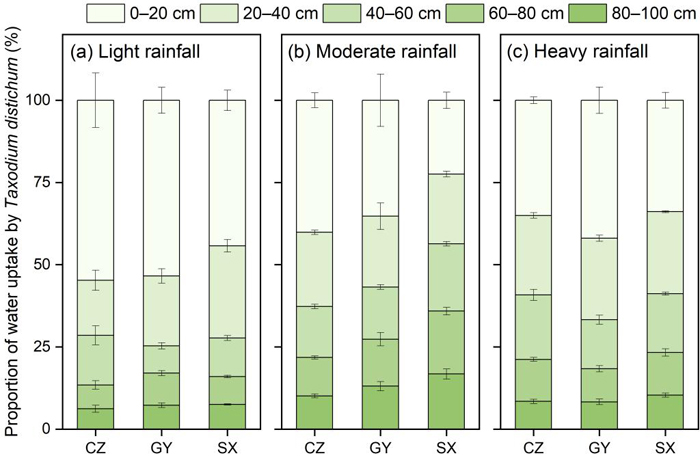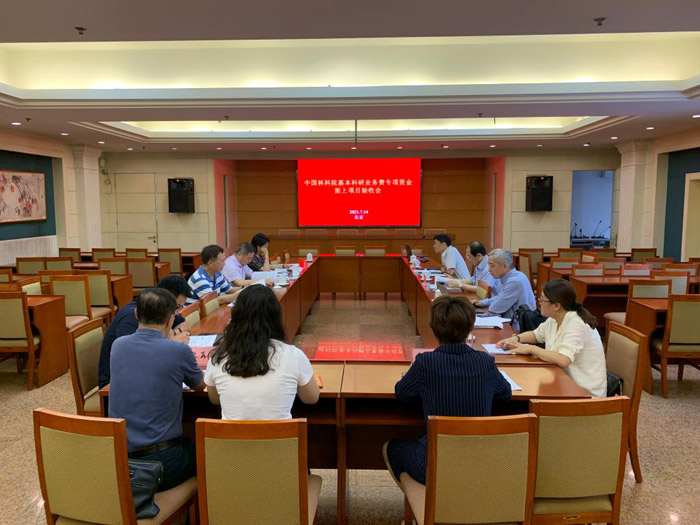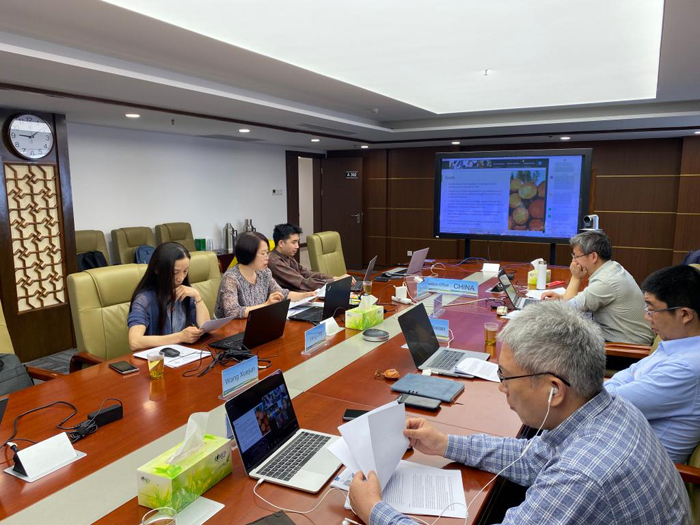
南方集体林区林业经济转型水平评价及驱动因素分析
编号
lyqk010014


中文标题
南方集体林区林业经济转型水平评价及驱动因素分析


作者单位
1. 吉安市农业农村产业发展服务中心 江西吉安 343000;
2. 江西农业大学经济管理学院 江西乡村振兴战略研究院 南昌 330045


期刊名称
林草政策研究


年份
2022


卷号
2


期号
3


栏目名称
实证分析


中文摘要
立足当前生态文明建设和林业发展,文中从产业结构转型、劳动力就业结构转型和生态环境建设3方面构建我国南方集体林区林业经济转型指标体系,基于2000—2019年面板数据,运用熵值法测算林业经济转型水平,采用固定效应模型实证探究促进林业经济转型的驱动因素。结果显示:1)南方集体林区林业经济转型水平总体呈上升趋势,转型平均水平从2000年的0.51升至2019年的0.90,林业产业结构和劳动力就业结构趋向合理化转变;2)影响南方集体林区林业经济转型的主要为林业投资、技术水平、森林资源和林业系统工资水平的积极驱动作用,以及林权制度改革的政策冲击和城镇水平提高所产生的一定阻碍作用;3)不同水平下林业经济转型的主要驱动因素存在差异,转型水平较低阶段主要受技术水平、森林资源、人才资源、经济水平、城镇水平和工资水平影响,转型水平较高阶段主要受制度创新、林业投资、森林资源和工资水平影响。森林资源的丰富程度对各方面均会产生影响,森林资源较少地区林业经济转型受制度创新和技术水平影响显著,森林资源较多地区则受技术水平、森林资源、城镇水平和工资水平影响显著。结合南方集体林区林业经济转型发展的现状及实证分析结果,提出应进一步完善林业改革制度配套措施、加快发展第三产业、拓宽资金渠道、提高林业劳动力供给质量等有利于推动林区林业经济转型的对策建议。


基金项目
国家自然科学基金重点课题乡村振兴进程中的农村经济转型的路径与规律研究(71934003);江西农业大学 经济管理学院研究生创新专项资助项目(JG2021005)


英文标题
Evaluation of Forestry Economic Transformation Level and Its Driving Factors in Collective Forest Regions in Southern China


作者英文名
Huang Huajin, Liao Wenmei


单位英文名
1. Ji'an Agricultural and Rural Industry Development Service Center, Ji'an 343000, Jiangxi, China;
2. School of Economics and Management, Jiangxi Agricultural University Jiangxi Rural Revitalization Strategy Research Institute, Nanchang 330045, China


英文摘要
From the perspectives of the transformations of industrial structure and labor force employment structure, and the construction of ecological environment, an index system of forestry economic transformation in southern collective forest regions was established. Based on the panel data of southern collective forest region from 2000 to 2019, this paper used an entropy method to calculate the level of forestry economic transformation and a fixed effects model to empirically studies the driving factors for promoting the economic transformation of forestry. The results showed that: 1) the overall level of economic transformation of forestry in southern collective forest region manifested an upward trend, and the average level of economic transformation increased from 0.51 in 2000 to 0.90 in 2019, also, the transformations of forestry industry structure and labor force employment structure tended towards rationalization. 2) the forestry economic transformation in southern collective forest regions is mainly driven by the positive effects of forestry investment, technology level, forest resources and the wage level of the forestry system, as well as the hindering effects of policy impact of collective forest tenure reform and development of urban level. 3) the main driving factors of forestry economic transformation under different levels are different, which the lower stage of transformation is affected by the technical level, forest resources, human resources, economic level, urban level and wage level, while the higher stage of transformation is affected by system innovation, forestry investment, forest resources and wage level. The richness of forest resources affects all aspects, which the transformation of forestry economies in the areas with fewer forest resources is significantly affected by institutional innovation and the level of technology, however, that in the areas with more forest resources is significantly affected by technical level, forest resources, urban level and wage level. Combining the present situation of forestry economic transformation and development in southern collective forest region and the results of empirical regression, this study proposes several suggestions to promote the transformation of forestry economy in forest areas, including improving the supporting measures for forestry reform system, accelerating the development of forestry tertiary sector, extending the source of finance, and enhancing the quality of forestry labor supply.


英文关键词
evaluation of forestry economic transformation;index system;driving factors;collective forest regions in south China


起始页码
38


截止页码
47


投稿时间
2022-05-03 00:00:00


作者简介
黄华金(1997-),女,硕士,研究方向为农业经济理论与政策。E-mail:hhj12090115@163.com


通讯作者介绍
廖文梅(1978-),女,教授,博士生导师,研究方向为林业经济理论与政策。E-mail:liaowenmei@126.com


E-mail
liaowenmei@126.com


分类号
F326.24


DOI
10.12344/lczcyj.2022.05.03.0001


参考文献
[1] 黎洁.陕西安康移民搬迁农户的生计适应策略与适应力感知[J].中国人口·资源与环境,2016,26(9):44-52.
[2] 曹玉昆,周丹,刘向越.黑龙江省国有林区森林抚育补贴政策实施状况调研报告[J].林业经济,2018,40(5):85-90.
[3] International Fund for Agricultural Development (IFAD).Inclusive assessment of rural poverty:Asia and the Pacific[R].Rome:IFAD,2016.
[4] 王玉芳,周妹,曹博,等.黑龙江省国有林区经济转型对经济内生增长的影响研究[J].林业经济,2018,40(5):103-112.
[5] 仲维维,张滨,张洪瑞.国有林区林业经济转型博弈分析:基于大小兴安岭生态功能区建设[J].林业经济,2017,39(12):46-49,64.
[6] 杜钰玮,万志芳.基于DEA-Malmquist指数的林业产业转型效率评价:以黑龙江省国有林区为例[J].林业经济,2019,41(5):32-37.
[7] 吕洁华,张滨,王惠.基于主成分排序图的林业产业转型倾向研究:以黑龙江省国有林区为例[J].生态经济,2017,33(10):89-95.
[8] 马丽,黄凤,贾利.我国林业资源型城市转型评价标准与实证研究:以伊春市为例[J].林业经济,2014,36(6):48-51.
[9] 黄季焜.乡村振兴:农村转型、结构转型和政府职能[J].农业经济问题,2020(1):4-16.
[10] 王岳,朱震锋.黑龙江森工林区经济转型发展的动力因素分析[J].森林工程,2019,35(3):26-31.
[11] 姜钰,程雪.黑龙江省林业产业集聚与产业结构优化关系:基于VAR模型的脉冲响应和方差分解分析[J].林业经济,2019,41(2):79-83.
[12] 曹娟娟,王玉芳,陈浩.重点国有林区森工集团转型能力评价与差异性分析[J].农林经济管理学报,2020,19(1):77-86.
[13] 王玉芳,周妹,李静.大小兴安岭国有林区转型发展进程评价[J].林业经济,2016,38(10):22-27.
[14] 丁贺,聂华,张颖.中国林业产业结构演变趋势及弹性模型分析[J].世界林业研究,2014,27(2):57-60.
[15] 朱震锋,曹玉昆,王非,等.基于效率评价的国有林区经济转型发展动力分析[J].林业经济问题,2016,36(4):295-301.
[16] 王梓,张平,全良.黑龙江省林下经济产业集群发展影响因素研究[J].林业经济,2018,40(8):61-67.
[17] 万志芳,付崇强.黑龙江省国有林区林业产业转型的影响因素研究[J].林业经济,2018,40(5):65-69.
[18] 赵晓光,赵佳欢.黑龙江省国有重点林区林业经济发展影响因素的空间面板实证分析[J].浙江林业科技,2017,37(5):54-60.
[19] 王玉芳,郭娟,周妹,等.林下经济发展促进了林区经济转型吗?:以黑龙江省国有林区为例[J].林业经济问题,2017,37(3):10-16,98.
[20] 廖文梅.南方集体林区林业经济增长的产业结构演变及其差异分析:基于13个省(区)1995—2011年的统计数据[J].林业科学,2014,50(8):131-140.
[21] 李朝洪,孙丹,王志伟.大小兴安岭国有林区产业转型绩效的驱动与障碍因素诊断[J].东北林业大学学报,2020,48(5):133-138.
[22] 许俊杰,王志伟.大兴安岭国有林区接续产业选择问题研究[J].林业经济问题,2011,31(2):95-97,101.
[23] 宋维明,杨超.1949年以来林业产业结构、空间布局及其演变机制[J].林业经济,2020,42(6):3-17.
[24] 景跃军,张昀.我国劳动力就业结构与产业结构相关性及协调性分析[J].人口学刊,2015,37(5):85-93.
[25] CULASR J.Deforestation and the environmental Kuznets curve:an institutional perspective[J].Ecological Economics,2007,61(2):429-437.
[26] 樊纲,王小鲁,张立文,等.中国各地区市场化相对进程报告[J].经济研究,2003(3):9-18,89.
[27] 何文剑,赵秋雅,张红霄.林权改革的增收效应:机制讨论与经验证据[J].中国农村经济,2021(3):46-67.
[28] 邵砾群,陈海滨,刘军弟,等.基于灰色理论的陕西省林业产业结构分析预测[J].西北林学院学报,2012,27(5):289-292.
[29] 廖冰,高雪萍,廖文梅,等.江西林业固定资产投资结构比较分析[J].林业经济问题,2014,34(2):154-159.
[30] 刘鹏,高丹丹,李顺龙.林业投资的经济增长效应[J].东北林业大学学报,2020,48(12):64-69.
[31] 赵亭,王丽,王晓洁.林业科技发展对国有林区转型的作用分析:以内蒙古大兴安岭国有林区为例[J].林业经济,2017,39(2):26-29.
[32] 曹彦,何东进,纪志荣,等.中国省域林业经济发展影响因素的空间面板计量经济分析[J].林业经济,2016,38(5):66-70,90.
[33] 张启春,朱明.区际产业转移背景下中部六省发展环境研究[J].华中师范大学学报(人文社会科学版),2014,53(2):43-52.
[34] 夏天超,夏一凡,乔丹,等.天然停伐对重点国有林区职工福利的影响[J].林草政策研究,2021,1(4):47-54.
[35] 袁红姗,吴水荣,余洋婷.生态文明建设中林业贡献率研究:以北京市为例[J].林业经济,2019,41(5):3-6,18.


PDF全文
浏览全文


-
相关记录
更多
- 我国林业科技发展监测指标体系的构建及应用 2023
- 竹产业政府投资项目绩效评价指标体系构建 2024
- 县域森林康养建设适宜性评价指标体系构建——以三明市将乐县为例 2023
- 我国林草学术期刊综合影响力评价 2023
- 山地城市坡坎崖绿化评价指标体系构建 2023
- 我国森林资源增长驱动因素及潜力分析——基于第九次全国森林资源清查结果 2022
 打印
打印


